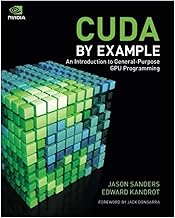Summary of "Citadel Securities Future of Global Markets 2025: Jensen Huang, Founder and CEO, Nvidia"
Summary of Key Financial Strategies, Market Analyses, and Business Trends from the Video
1. Nvidia’s Foundational Insight and Business Strategy
- Nvidia was founded in 1993 based on the insight that general-purpose CPUs have limits, especially as Moore’s Law approaches its physical limits.
- Jensen Huang and his team focused on accelerated computing—specialized processors (GPUs) designed for domain-specific problems rather than general-purpose computing.
- Nvidia invented not only the GPU technology but also the market and ecosystem for 3D graphics, gaming, and later generalized GPU computing through CUDA.
- The company’s success came from inventing a new computing platform, which is rare and took nearly 30 years to mature.
2. The Rise of AI and Nvidia’s Role
- Nvidia GPUs became central to the AI revolution starting in the early 2010s when deep learning breakthroughs (e.g., AlexNet in 2012) leveraged GPU acceleration.
- CUDA and libraries like cuDNN enabled researchers worldwide to dramatically speed up AI computations.
- Nvidia’s edge was reasoning from first principles about the universal function approximator nature of deep neural networks and expanding GPU use beyond graphics to AI workloads.
- The company democratized AI computing by embedding CUDA into academia and research, accelerating adoption.
3. AI Factories and Platform Strategy
- In 2016, Nvidia launched the DGX1, the world’s first AI factory—a specialized, large-scale AI computing system.
- Nvidia evolved from selling individual GPUs to delivering entire AI computing platforms (“AI factories”) that integrate GPUs, CPUs, networking, and software stacks.
- These AI factories are built to scale massively (up to gigawatt power consumption) and deliver superior energy efficiency and throughput, driving down costs and enabling larger AI models and applications.
- Nvidia’s platform approach includes software compatibility across generations, enabling rapid innovation and adoption.
4. Market Trends and AI Adoption
- AI is transforming existing hyperscalers (Google, Amazon, Meta) by powering search, recommendation systems, personalized ads, and user-generated content.
- AI investment is expected to reach $500 billion by 2025 and potentially become a multi-trillion-dollar annual investment category.
- New AI-native companies (OpenAI, Anthropic, Google Gemini, Meta) are emerging as AI model makers, creating a new industry layer.
- Agentic AI (digital labor) will augment and supplement human enterprise workforces, creating trillions in economic value.
- Robotics and physical AI represent a massive future market, with AI enabling robots and autonomous vehicles to perform complex tasks in the physical world.
- Nvidia’s Omniverse platform is a key undervalued asset for robotics, enabling virtual training environments that drastically reduce the sim-to-real gap.
5. Sovereign AI and Global Policy
- Countries are pursuing sovereign AI to control their own data and intelligence, blending imported and domestically developed AI capabilities.
- Nvidia supports global AI ecosystems with companies across Europe and Asia.
- Regarding China, Nvidia has exited the market due to export restrictions but emphasizes the importance of nuanced policies that do not harm U.S. interests or researchers globally.
- Winning the AI race involves winning developer ecosystems and maintaining American technology leadership while engaging internationally.
6. AI Security and Future of Computation
- AI security will evolve similarly to cybersecurity, relying on community cooperation and AI-driven security agents monitoring AI systems.
- The future of computing will be 100% generative rather than retrieval-based, meaning AI will generate content, answers, and media in real-time based on context.
- This generative paradigm requires massive AI factories to support continuous, context-aware computation.
7. Investment and Operational Advice for CIOs and Investors
- Key performance indicator (KPI) to watch: Throughput per unit energy in AI factories directly governs customer revenue potential.
- Nvidia’s treasure trove includes over 350 software libraries built on CUDA, with cuDNN being one of the most important ever created.
- CIOs with significant AI budgets should invest in building their own AI models and digital employees, focusing on onboarding and fine-tuning AI systems to embed company culture and knowledge.
- The future workforce will be a hybrid of human and digital AI employees, requiring new HR and IT methodologies.
8. Other Frontier Markets
- Healthcare AI is advancing rapidly, with AI models beginning to understand proteins, cells, and complex biological structures.
- Telecommunications (5G/6G) will be revolutionized by AI.
- Quantum computing hybridized with GPUs (CUDA Q) is a growing area of innovation.
Methodology / Step-by-Step Insights Shared by Jensen Huang
-
Starting Nvidia:
- Identify limits of existing technology (CPUs and Moore’s Law).
- Hypothesize domain-specific accelerators as the future.
- Invent both technology and market simultaneously.
- Build ecosystem and developer adoption (e.g., CUDA everywhere).
-
Scaling AI:
- Democratize AI computing by embedding GPUs and CUDA into research and academia.
- Develop AI factories that integrate hardware and software for scalable AI workloads.
- Focus on energy efficiency and throughput to reduce costs and enable larger AI models.
- Maintain software compatibility across generations to accelerate innovation.
This summary captures the core financial strategies, market trends, and technological insights from the video, highlighting Nvidia’s pivotal role in shaping the AI computing landscape and the broader implications for global markets and policy.
Category
Business and Finance
Share this summary
Featured Products

HHCJ6 Dell NVIDIA Tesla K80 24GB GDDR5 PCI-E 3.0 Server GPU Accelerator (Renewed)

CUDA by Example: An Introduction to General-Purpose GPU Programming

Dual NVIDIA GeForce RTX 3050 6GB OC Edition Gaming Graphics Card - PCIe 4.0, 6GB GDDR6 Memory, HDMI 2.1, DisplayPort 1.4a, 2-Slot Design, Axial-tech Fan Design, 0dB Technology, Steel Bracket